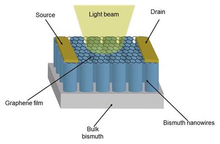

Tina Louise Brower-Thomas is the Education Director at the Center for Integrated Quantum Materials, and Executive Director of its Howard University branch.[2][3]
Brower-Thomas received a B.S. in chemistry from Howard University. She then attended the New York University Tandon School of Engineering, receiving an M.S. in chemistry and a Ph.D. in materials chemistry. She was a postdoctoral research fellow at the U.S. Naval Research Laboratory.[4] As part of her postdoctoral research, she was part of a project that built electrically conductive molecular networks using cowpea mosaic virus engineered with surface cystine residues to anchor gold nanoparticles.[5][6] She was then a consultant to DARPA and the Department of Homeland Security.[4]
She returned to Howard University in 2007. As of 2022, she also has a visiting faculty appointment at Harvard University. Her research focus includes molecular self-assembly, surface functionalization, chemical vapor deposition, and chemical intercalation of 2D materials.[4]
Brower-Thomas is known for her work in education. She emphasizes early STEM education at the high school and earlier levels, since engagement is important in retaining interest in STEM careers, especially for women and people of color. She also emphasizes the interdisciplinary of quantum information as a field.[2][7]